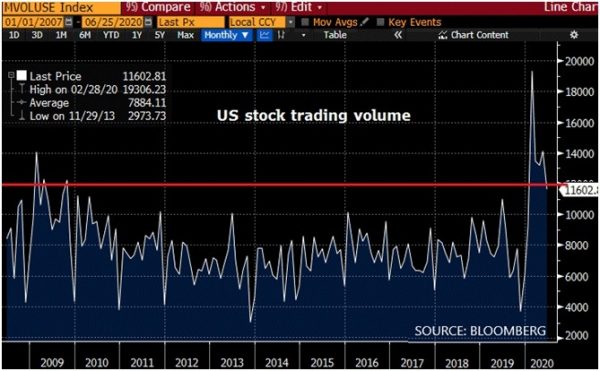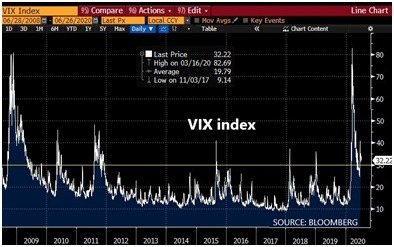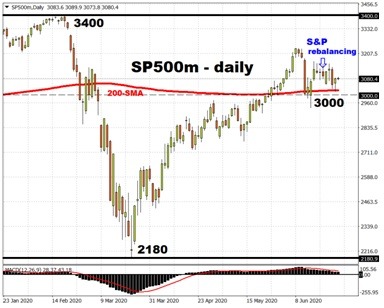US stock markets could see a massive spike in trading volume today, as the Russell indexes reconstitution takes place. The once-a-year process involves adjusting the list of stocks that makes up the indexes, with an estimated US$9 trillion in assets linked to those benchmarks.
This imminent restructuring may have an outsized impact, due to the immense changes to the equity landscape amid the global pandemic, along with the already elevated trading volumes in US stock markets seen for much of this year. Volumes are still near the highest levels since 2009.
The Russell reshuffle could also roil markets as the keenly awaited event comes amid persistently elevated volatility, with the VIX index holding stubbornly above the 30 level.
To be sure, US equities appear to have enough resilience to weather today’s episode, going by recent past performance. During the June 19 quadruple witching and S&P quarterly rebalancing, total US stocks trading volumes surged by 61.5 percent compared to the day prior, which is its largest increase since December 20, 2019. The S&P 500, which has an estimated US$11.2 trillion in assets tied to it according to S&P Dow Jones, ended down 0.56 percent last Friday. It has declined by a further 0.45 percent since, though is still supported by the 200-day simple moving average.
Even if it’s all smooth-sailing for US stocks going into the weekend, the final trading days of June could see pension funds and other major investors rebalancing their respective portfolios, potentially booking some of the tremendous gains seen in US equities this quarter. Since March 31, the S&P 500 has climbed over 19 percent, the Dow is up by more than 17 percent, while the Nasdaq composite has soared by 30 percent. Wall Street estimates for the quarter-end pension fund rebalancing range between US$35 billion to US$76 billion.
These technical events could inject a huge dose of volatility into the markets over the coming days, potentially exacerbating the effects of major developments that sway global risk sentiment, such as the flare up in US coronavirus cases. Risk assets have clearly grown comfortable ignoring the world’s gloomy fundamentals, with the IMF adding to the chorus that’s highlighting the disconnect between financial markets and the economic outlook. Yet, with global equities having lost much of their upward momentum of late, perhaps the induced volatility could be the jolt markets need in order to break out of its sideways saunter.
















